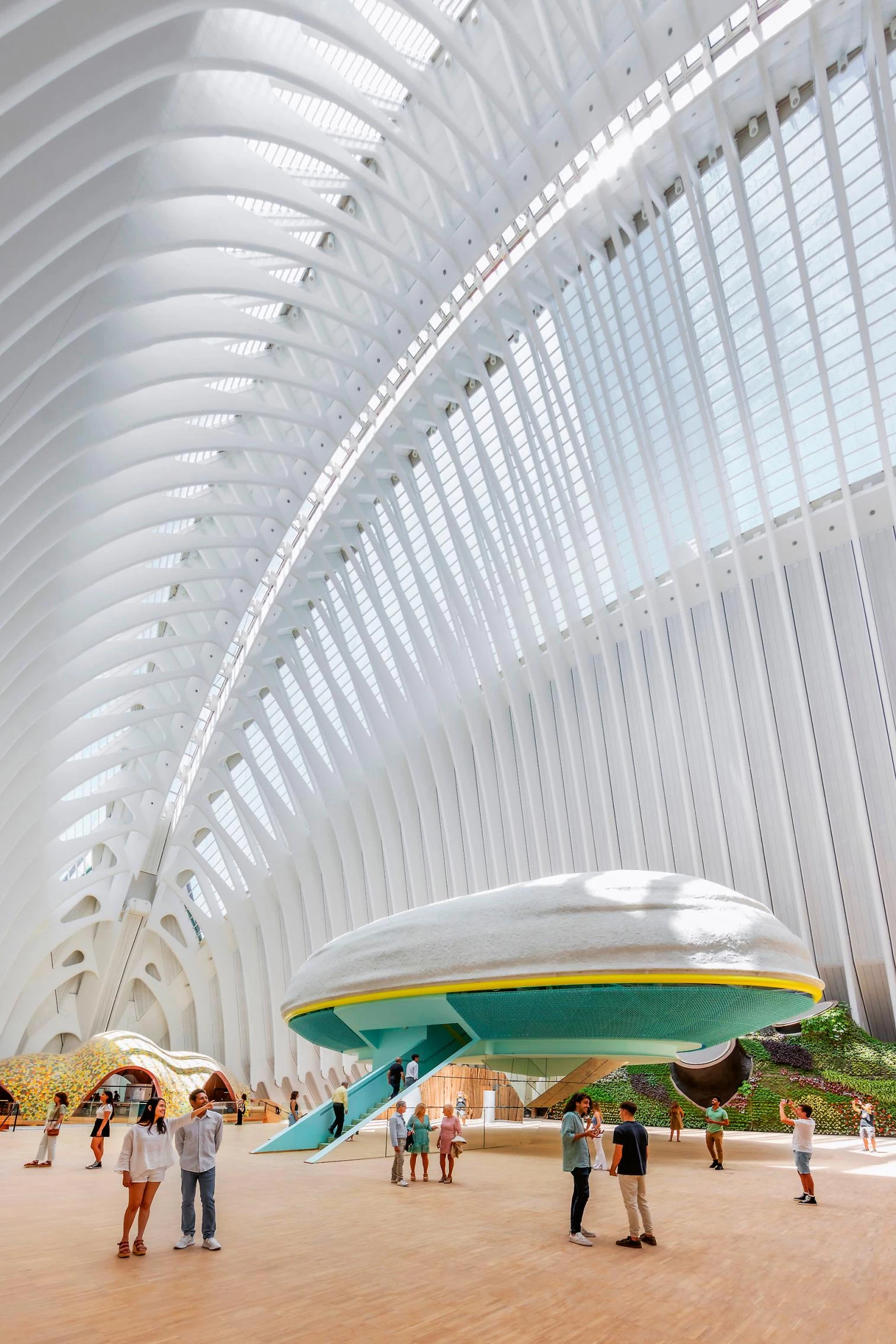
In spite of the exceptional reception the public has always given him, Santiago Calatrava’s L’Àgora is regarded with suspicion by critics. Not only because of the visual populism the construction flaunts, but also, and above all, because this skeleton of sorts, 80 meters tall, is rather useless, as evidenced by the fact that the Generalitat Valenciana has spent 19 million euros just to make it functional. The result of this effort to give it some purpose has just officially opened: several exhibition halls, an auditorium, a restaurant, and a bookstore within a series of biomimetic pieces that their author, Enric Ruiz-Geli, calls ‘living cells,’ and which compose a repertoire of folies that give the premises some scale while redundantly adding a metaphor to the one the building already in itself had.







